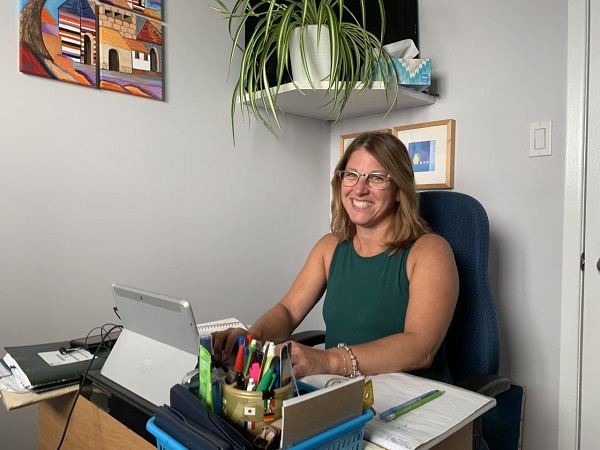By Jane Kitchen, Senior Communications Advisor
Originally published on Connections, the SickKids CCMH staff news site
Aug. 5, 2020
Ana Castelo-Zeballos is a Child and Youth Care Practitioner (CYCP) and in-home worker, based at the Sheppard site. Her team is made up of five CYCPs, and a Child and Family Therapist who splits their time with Day Treatment. The team is called upon to support school-aged clients for home visits or to confer with the school team.
Pre-COVID-19, upon receiving a referral two CYCPs would travel to the home to do an assessment, which can take up to five sessions, with the support of a consulting clinical team made up of CYCPs, a psychiatrist, a psychologist, and a child and family therapist. CYCPs would average two hours twice a week for in-home visits, sometimes offering sessions for mom, dad and/or caregivers. They would offer this for three to six months, with a whole year of monthly booster sessions. They also support the Intensive Child and Family Services program, offering 10-week sessions for youth, and the HYPE (Helping You Parent Effectively) program which offers five weeks of intense service as part of the In-home services program.
Clients can also be referred from school; CYCPs can support teachers and social workers who work with the youth by observing, providing a different perspective, and giving them strategies to try. They can also lend their support at daycares and after-school programs, and they even get invited to dance recitals and soccer games.

“There are so many benefits to doing an in-home visit, or a visit where the youth is in their own environment,” says Castelo-Zeballos. “They are most open and themselves. They don’t feel like they need to clean up or become someone else. And when we are in the home, we see the whole family dynamic and we are not just focusing on the youth as the issue.”
So what do you do when you can no longer visit your client in person, in their own environment?
When in-home visits ceased in March due to the pandemic, the team immediately reached out to their clients via phone to touch base. A couple of families had sessions the first day over the phone.
While the team began offering videoconferencing within a couple of weeks of site closure, some families still prefer the phone. “Parents don’t have the support system they had before physical distancing,” says Castelo-Zeballos. “Right now they are parents, therapists and teachers. On the phone, they are busy running around, or they may choose to use a speaker phone, which can be less tiring than sitting for an hour at a screen.”
The weekly sessions offer clients and their families consistency and structure by touching base on goals and the treatment plan, and celebrating successes. Castelo-Zeballos and the rest of her team have been creative with the video calls, using games such as tic-tac-toe, using the whiteboard to communicate and sharing documents over the screen. Families can connect from anywhere, including from out of town, giving them more opportunity to meet.
While it may be a disadvantage to not be in the client’s space and offer immediate problem-solving techniques, it has had an unexpected benefit, says Castelo-Zeballos: “When you are in-home, parents look to you, you can be hands on. But when you are connecting virtually, you can’t step in, so you support them in practising what you have been talking about and encourage them to use their skills.”
For families that have been struggling with virtual visits, with the lifting of some of the COVID-19 restrictions this past month, they have been given an option to have in-person sessions onsite. While only a couple of families have done so, according to Castelo-Zeballos it has been a valuable option.
Whether it is via phone, screen or an in-office visit shaped by COVID-19 restrictions, these connections offer clients a “sense of normalcy” says Castelo-Zeballos, something that has been lacking during distancing protocols that have lasted for months.
“We will continue to evolve and adapt our care as it is safe to do so,” says Castelo-Zeballos. “Meanwhile, we will remain consistent in giving our clients structure during this overwhelming time, and will celebrate our successes.”



